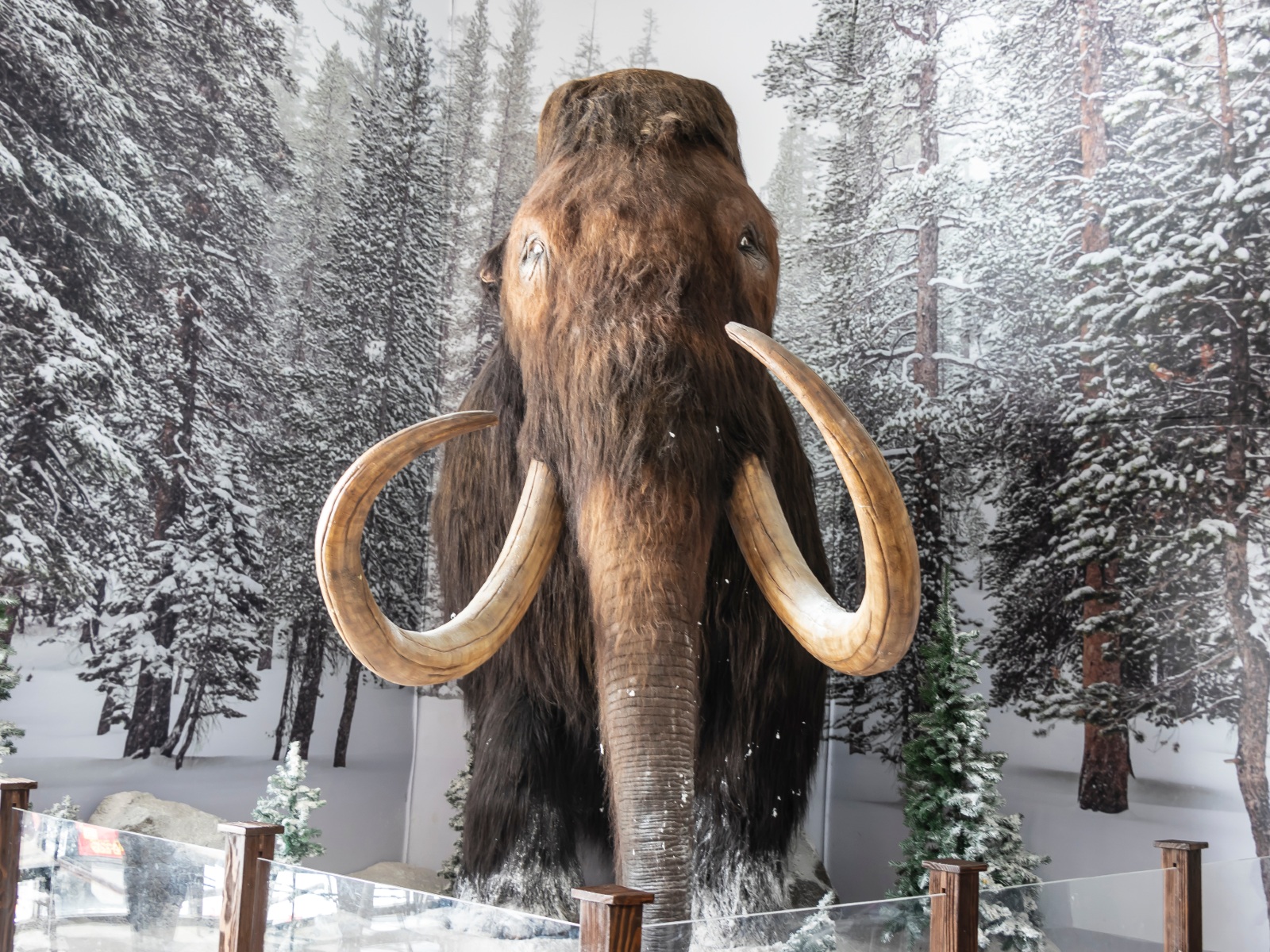This is sounding eerily like Jurassic park, but with fuzzier cuter monsters

To save animals from extinction, Russian scientists are turning to Spielberg for inspiration: Arctic ecologists Nikita and Sergey Zimov are attempting to recreate the Pleistocene-era grassland Mammoth Steppe — where bison, caribou, muskox, and of course woolly mammoths roamed and grazed — by reintroducing and maintaining the species that used to inhabit the area. With their Pleistocene Park project in Siberia, the scientists hope to mitigate climate change in several ways, the BBC reports (watch, runtime 07:27).
But first, what is the Mammoth Steppe? Roughly 15k years ago, the mammoth steppe, the world’s largest biome before the most recent ice age, spanned from France eastward to Canada, and from the Arctic to China. It was made up of millions of large herbivores, including mammoths, bison, and woolly rhinoceros which fed on abundant grasslands. This grassland played a vital role in climate control, but has deteriorated significantly over time along with the wild populations of these herbivores.
The modern arctic ecosystem has roughly 100 times fewer animals than it did in the Pleistocene. With the end of the Pleistocene era, the climate warmed, and humans migrated to Siberia and the Americas. The introduction of humans as predators in these regions led to the extinction of most large animals, and the further degradation of the steppes.
How has this affected climate change? As fewer large herbivores grazed and trampled the land, grasslands were replaced with mossy forests and wetlands, which are significantly less effective at absorbing carbon and coping with climate change.
Pleistocene park is hoping it can turn back the environmental clock some 15k years: By reintroducing megafauna (read: large animals) Nikita hopes to promote grassland expansion. The trampling of the animals will expose the permafrost layer, enabling it to freeze better during the winter, thereby slowing down the process of its melting, which is a major contributor to carbon dioxide emissions. Grasslands will also be better than forests at maintaining an open layer of snow with direct exposure to sunlight, thereby reflecting back more of the sun’s radiation.
So are they actually planning to bring back wooly mammoths? The short answer, yes. While mammoths are long extinct, CRISPR DNA technology may be able to facilitate the “de-extinction” or “genome engineering” of a modern day mammoth. The Woolly Mammoth Revival project at Harvard University has been working on copying DNA from existing mammoth genomes into modern day elephant cells, thereby attempting to create a new cold resistant elephant species that could inhabit an environment like Pleistocene Park. The process depends on restoring a number of cold resistance genes, of which scientists have already managed two, and are working on several dozen more.
But wait, is that ethical? Other than the “we shouldn’t play god” argument, some researchers have expressed concern that the process of resurrecting a mammoth could pose dangers to the Asian elephant surrogates that would birth these new creatures. Others argue that increased genetic modification of animals could lead to increased animal cruelty, with whole generations of modified animals bred explicitly for testing. Others have raised concerns about the threat creating new species may pose to human health, while some others find it just plain weird.
Our take? We’re going to put ourselves in the “all in the name of science camp,” in large part because we really, really want to see a mammoth in our lifetimes. We’ll leave you with the words of renowned UK biologist Richard Dawkins in response to those who ask why we should bother with this whole de-extinction business.